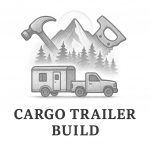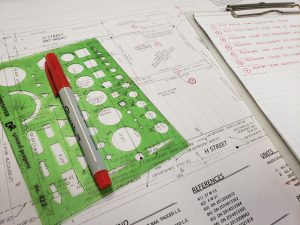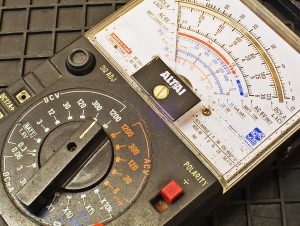Insulation & Climate Control in Cargo Trailer Conversions: Staying Cool, Warm, and Mostly Sane
So, you bought a cargo trailer and decided to turn it into a camper. Fantastic. But before you throw a mattress in and call it a day, let’s talk about something that can make or break your build—insulation and climate control.
Think of your trailer like a metal oven on wheels. Without proper insulation, it’s going to fry you in the summer and turn you into a sad popsicle in the winter. Climate control isn’t just about comfort—it’s about preventing moisture, mold, and misery.
Let’s break this system down and explore the budget and baller options for each component.
Why Insulation & Climate Control Matter
At its core, this system has three purposes:
1. Regulate internal temperature — So you’re not sweating through your sleeping bag or waking up with icicles on your eyebrows.
2. Improve comfort — Because being too hot or too cold makes everything else miserable.
3. Prevent condensation — Moisture is the silent destroyer of camper interiors. If you like black mold and rotted subfloors, by all means skip this part.
Insulation Types: Choose Your Flavor of Climate Armor
This is your first line of defense. Insulation slows down heat transfer—keeping warm air out in the summer and in during the winter.
Budget-Friendly:
• Rigid Foam Board (XPS or Polyiso): Affordable, easy to cut, decent R-value.
• Pros: Water-resistant, great for walls/floor.
• Cons: Can squeak, must be precisely cut to avoid gaps.
• Fiberglass Batts: Cheap, easy to find, but… kind of a mess.
• Warning: Not ideal for mobile applications. It sags, absorbs moisture, and hates movement.
Mid-Range Hero:
• Havelock Wool: Natural, mold-resistant, breathable, and eco-friendly.
• Bonus: Smells like a sheep at first but settles in nicely.
Premium Choice:
• Spray Foam (Closed Cell): High R-value and air-sealing in one.
• Pros: Seamless, moisture barrier built in.
• Cons: Expensive, messy, and nearly impossible to remove. Mistakes are permanent.
Pro tip: Combine insulation types. Foam board for floor and ceiling, wool for walls. Save money, keep comfort.
Vapor Barrier: Don’t Skip This, Unless You Enjoy Rot
A vapor barrier stops warm, moist air from meeting cold surfaces and turning into water droplets (aka trailer rain).
• Plastic sheeting or reflective bubble wrap (like Reflectix) can work, but it must be sealed at the seams.
• Install it on the warm side of your insulation (interior), especially in cold climates.
Budget Tip: Use 6-mil poly sheeting and tuck tape. Works great, costs little.
Premium Option: Foil-faced foam board acts as a vapor barrier and insulation.
Cooling: Mini Split vs. Rooftop A/C
Your cooling setup depends heavily on power availability, climate, and budget. Here’s how they stack up:
Budget Options:
• 12V roof vent fans (MaxxAir, Fantastic Fan)
• Pulls hot air out and draws in cool air. Works great in spring/fall or mild climates.
• Quiet and low power draw.
• Portable A/C units: Cheap, but bulky and often inefficient in sealed trailers.
High-End Options:
• Mini Split A/C Units: Super efficient and quiet.
• Wall-mounted, inverter-driven, and heat-capable models available.
• Requires mounting and an external condenser.
• Works best if you’re planning on running solar or shore power.
• Rooftop RV A/C Units:
• Easy to install in a roof vent hole.
• Power-hungry and noisy, but reliable.
Pro tip: If you’re off-grid most of the time, skip traditional A/C unless you’ve got solar for days or a generator you don’t mind listening to all night.
Heating: Diesel, Propane, or Electric—Choose Your Flame
Budget Picks:
• Mr. Heater Buddy (Propane): Great for occasional use, easy setup.
• Downsides: Uses indoor oxygen and requires ventilation.
• Electric Heaters: Okay for shore power users, otherwise power hogs.
Mid-Tier Marvel:
• Chinese Diesel Heaters (12V):
• Reliable, cheap (~$120), and widely used.
• Requires a fuel tank and a little install work.
• Great heat output and fuel efficiency.
Premium Comfort:
• Espar or Webasto Diesel Heaters:
• Top-tier quality and reliability.
• Quiet, efficient, and long-lasting.
• Bring your wallet.
Pro tip: Even in warm places, nighttime temps can drop like your cell signal. Don’t skip a heating solution.
Ventilation: The Unsung Hero
No matter how good your insulation and heat/cooling setup is, you still need air movement. Without it, you’re just cooking in your own carbon dioxide and humidity.
• MaxxAir Fan: The gold standard. Can run while raining, reversible flow.
• Floor vents: For passive airflow.
• Side windows: If you installed some (high five).
Proper airflow keeps your walls dry, your mind clear, and your camper less likely to smell like a gym bag.
Final Thoughts: Insulate First, Regret Never
Insulation and climate control aren’t flashy, but they’re absolutely essential to a successful cargo trailer conversion. Skimp here and you’ll feel it—literally.
Whether you’re building on a shoestring budget or going all-in on creature comforts, make insulation a priority. It doesn’t just regulate temperature; it protects your build and your sanity.
Your Turn
Let’s hear from you in the comments:
1. What insulation type are you planning to use—and why?
2. Are you going with diesel heat, propane, or just sleeping in a parka?
3. How are you managing airflow and ventilation?
4. Is A/C a must-have for your build or a luxury you’re skipping?
5. What’s your biggest concern with insulation and climate control?






